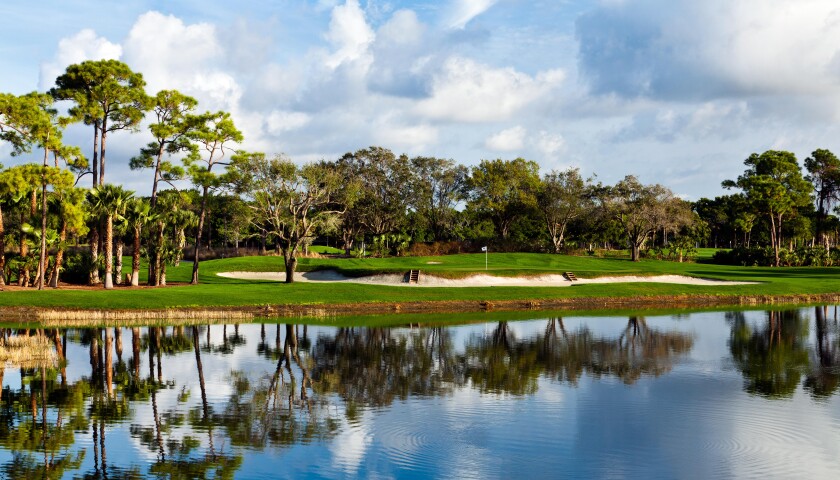
That the PGA Tour’s annual Florida swing did not start any sooner than it did is a good thing. The Cognizant Classic at The Palm Beaches held last week at PGA National Resort kicked off a four-week stretch in a Sunshine State that for most of the winter was hardly deserving of the name.
Florida golf is only now beginning to recover from two and half-months of unusually cloudy, cool and rainy weather. Thank a particularly intense El Nino cycle for that. It’s the same long-cycle weather phenomenon that brought cold, wet conditions to both the AT&T Pebble Beach Pro-Am at Pebble Beach Golf Links and the WM Phoenix Open at TPC Scottsdale. It also brought torrents of atmospheric river rain to southern and central California.
As smart and as sophisticated as today’s golf course superintendents are, the one thing about course management they cannot control is the weather. Everyday golfers might forget this, along with the world’s best golfers. Folks playing for the kind of prize money now available on tour deserve the best possible conditions. So, too, do fans.
Weather fluctuation and cold/warm cycles due to the turbulence of El Nino/La Nina patterns in the Pacific Ocean, are nothing new. What’s different this time around is the severity of the chill.
Palm Beach Gardens, Florida, home of the Cognizant Classic, endured the cloudiest December since 1940 and the coldest January since 1951, according to data from the Golf Course Superintendent’s Association of America. Under those conditions, turfgrass stalls in its normal growth and gets thin, patchy and soggy, especially when it has to absorb the 9.58-inches of rain that fell between Dec. 21 and Jan. 31.
Over on Florida’s west coast at The Country Club of Naples, certified superintendent Billy Davidson says this winter has been the worst he has seen in 16 years on the job. His course was particularly susceptible to such a downturn this season, given that the club is just recovering from a total rebuild and the Tifeagle bermudagrass greens have yet to develop a capacity for sustaining adverse conditions.
“Roots take time to develop depth, structure and resilience,” he says. From late November until the past few weeks, the combination of cloud cover, rain and subnormal temperatures produced conditions that were stressful for warm-season grasses like his Bermudagrass and Pas pallum fairways. “For a while there,” he says, “the grass just wasn’t strong enough. It was like sending a high school sophomore to play in the NFL. It didn’t have a chance.”

To give it a chance, Davison did what superintendents across Florida did: raise the height of cut, reduce mechanical wear and tear on the leaf blade, increase fertility and fungicide applications to fend off disease pressure, and communicate constantly with golfers. Indeed, weekly membership updates and constant messaging from everyone on the golf staff — from the pro shop and front office to the starters and marshals — often proves to be a greenkeeper’s best friend. It at least lets golfers know in advance so they are not caught off guard and upset over discovering thin or inadequate turf coverage.
This was especially important because during most of the Florida winter, the leaf blade was not getting enough sunlight and was effectively expected to perform on a forced diet. Light intensity and duration, measured by agronomists in terms of the molecular density of a Daily Light Integral, fell below the baseline minimum on Nov. 21 and did not return to needed levels until Feb. 10.
What do you do when there’s not enough light to let the plant, grow, perspire and recover from the normal stressors of play, traffic and maintenance? As explained by PGA Tour agronomist Mike Crawford, whose responsibilities include the Cognizant Classic, “you play defense.”
That means raising heights of cut, slowing down greens, mowing less, rolling more, and applying fungicides more frequently because their effect is shorter, and venting putting surfaces with needle tines more frequently so that there is improved drainage and exchange of gases — in other words, letting the green breath better.
Which is exactly what superintendent Andrew Wilson did at PGA National’s Champion Course in the run up to his Cognizant Classic. This is his third PGA Tour event there.
“We used a lot of turning boards of greens to reduce the mechanical impact of mowers,” Wilson says. He had to raise the mowing heights marginally to keep a healthy sward of turf cover throughout the winter. And he also relied upon direct messaging to the resort’s guests and members. “The differences in presentation, mowing heigh and speeds were marginal,” he says. “But we wanted golfers to know we were taking due precautions.”
Better to take such defensive measures than to have to put in a note in each PGA Tour player’s locker to the effect that the course was less than ideal. The cautionary approach worked. Of course, it also helped that the cloud cover, rain and cool temperatures abated just in time for the Florida swing.










